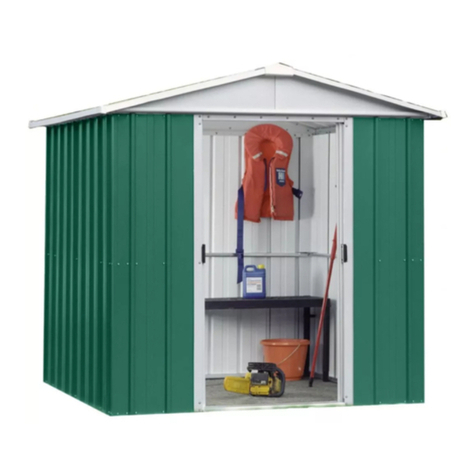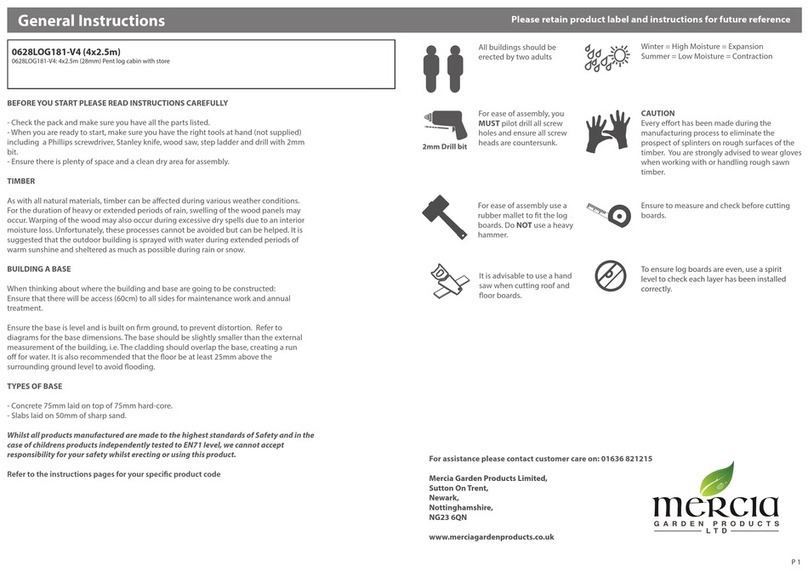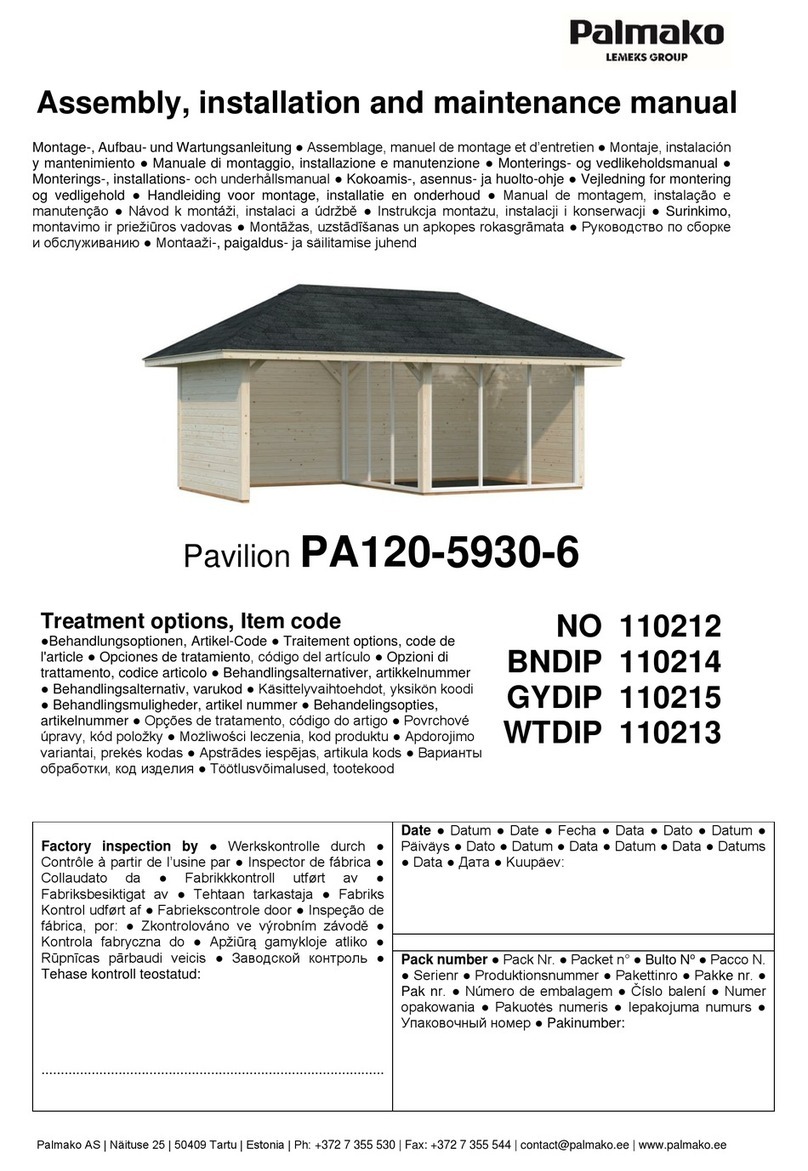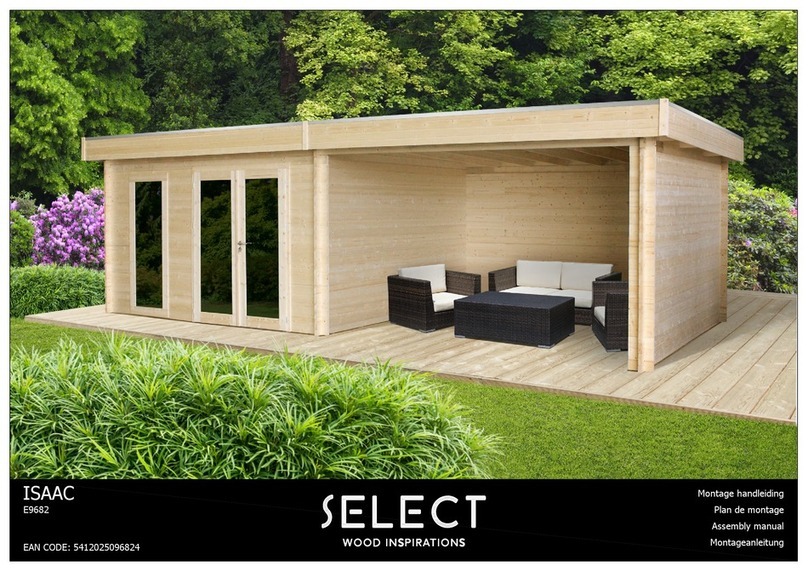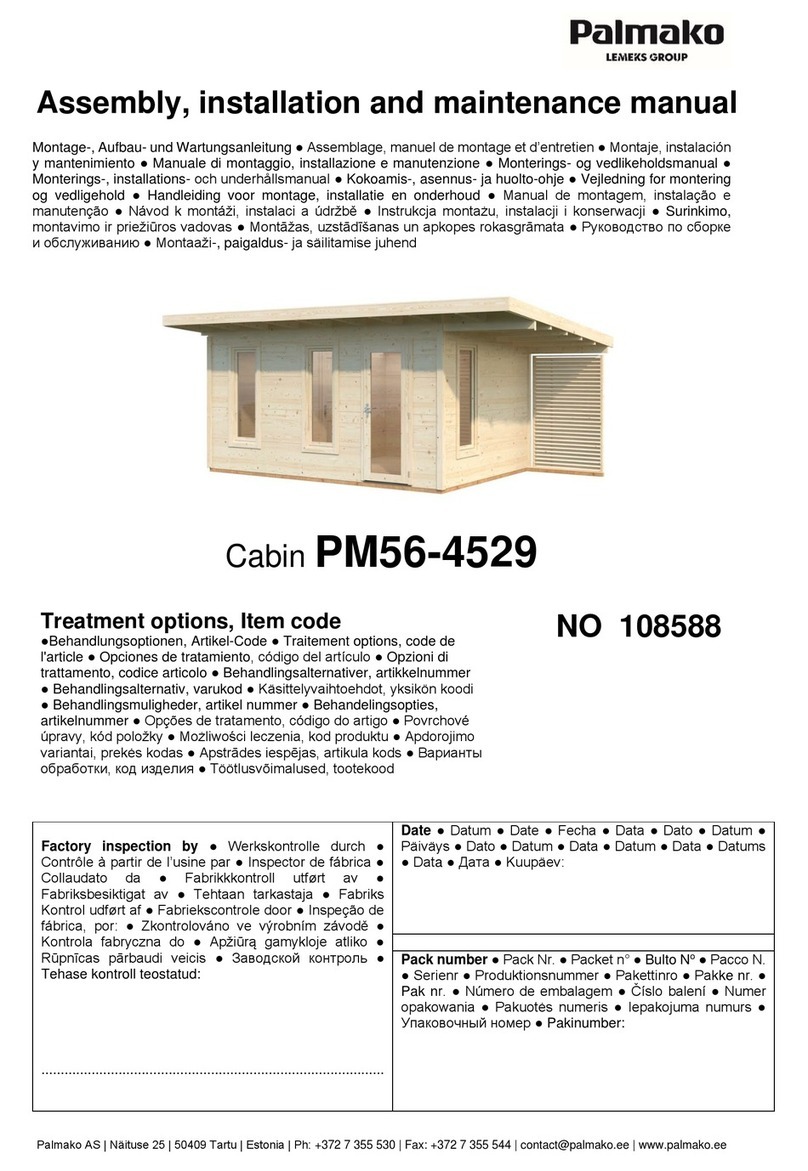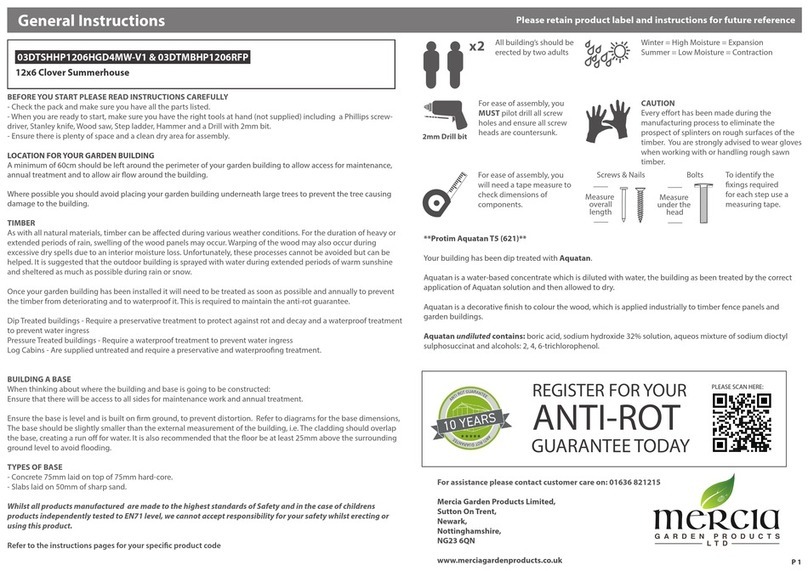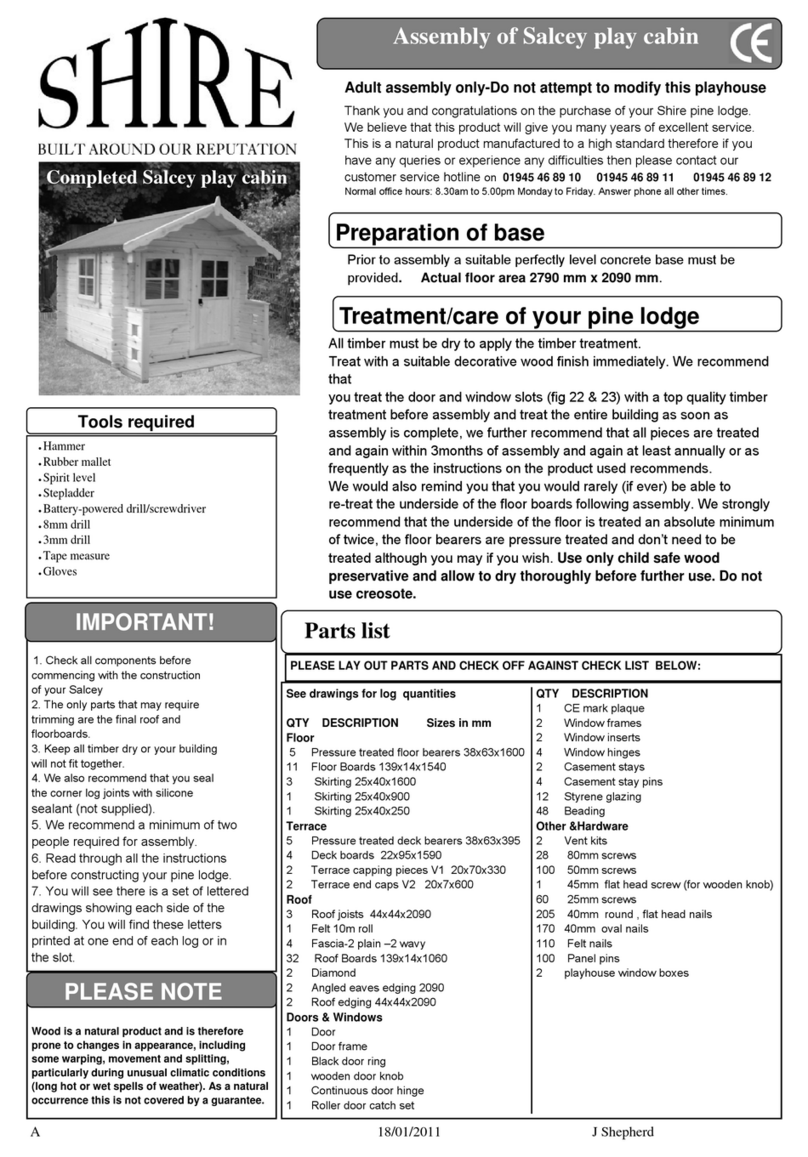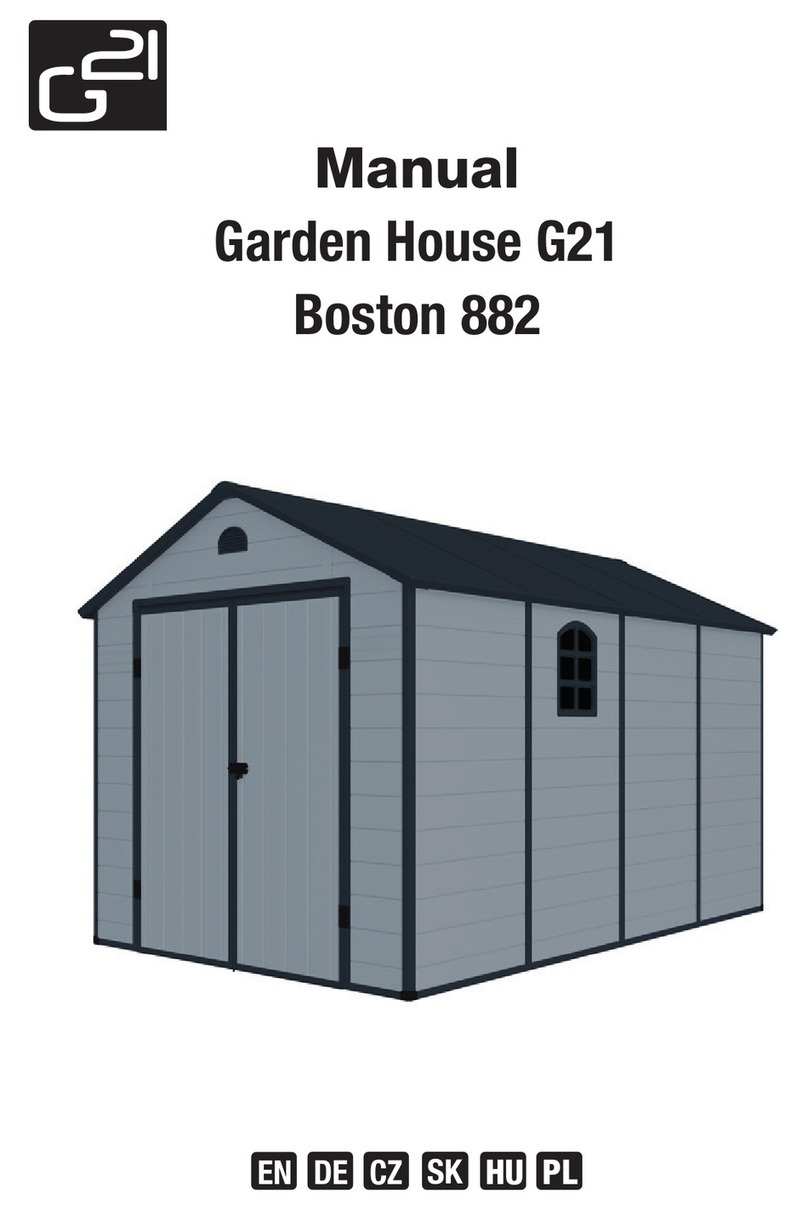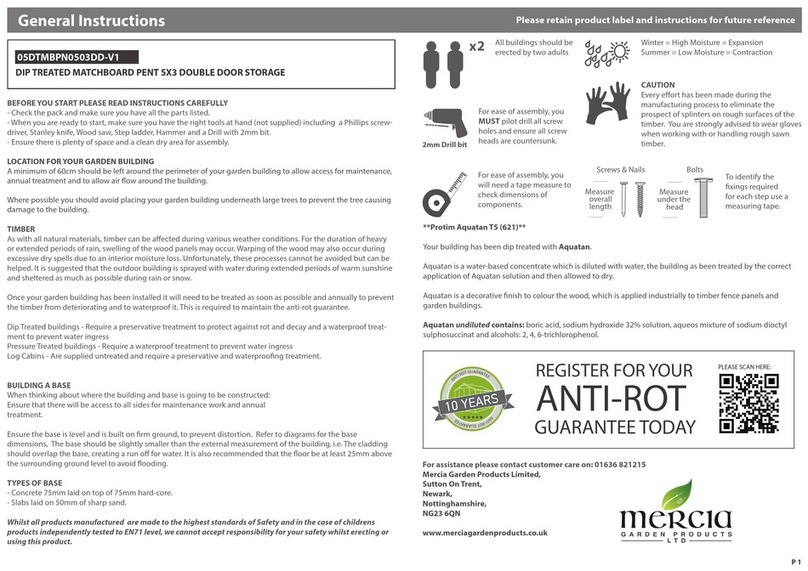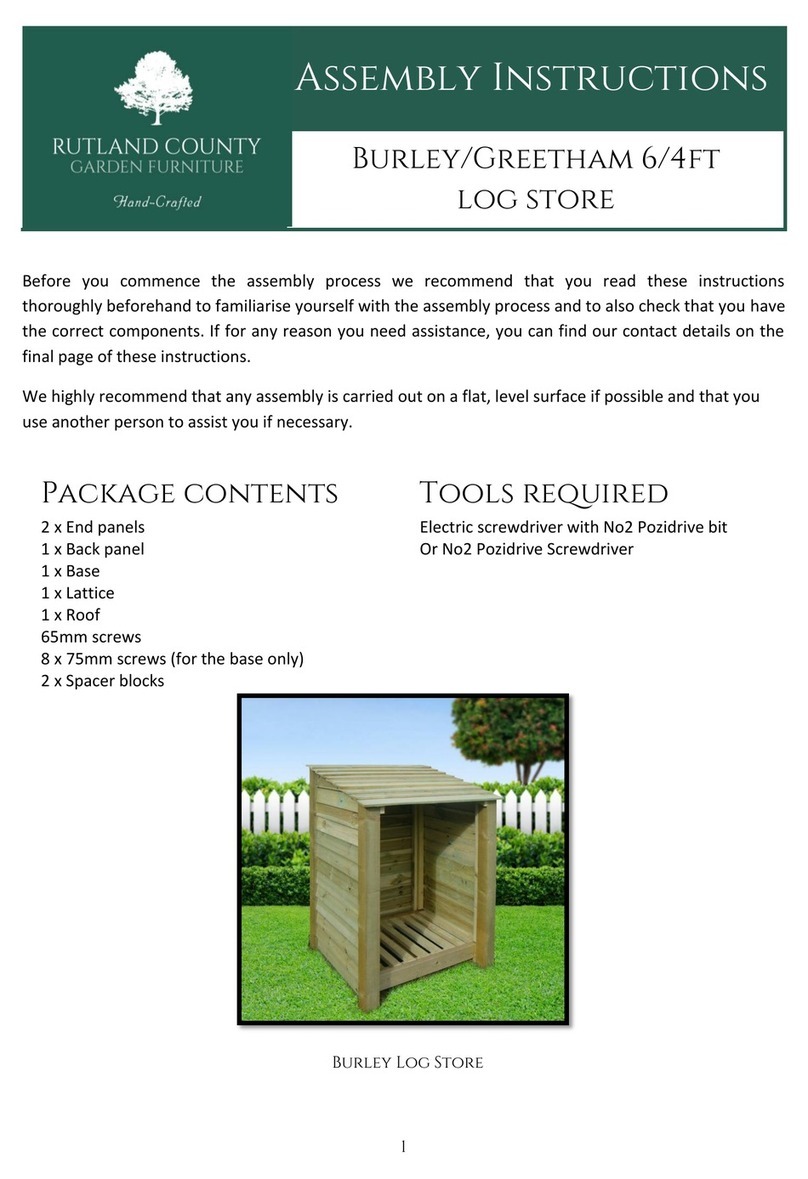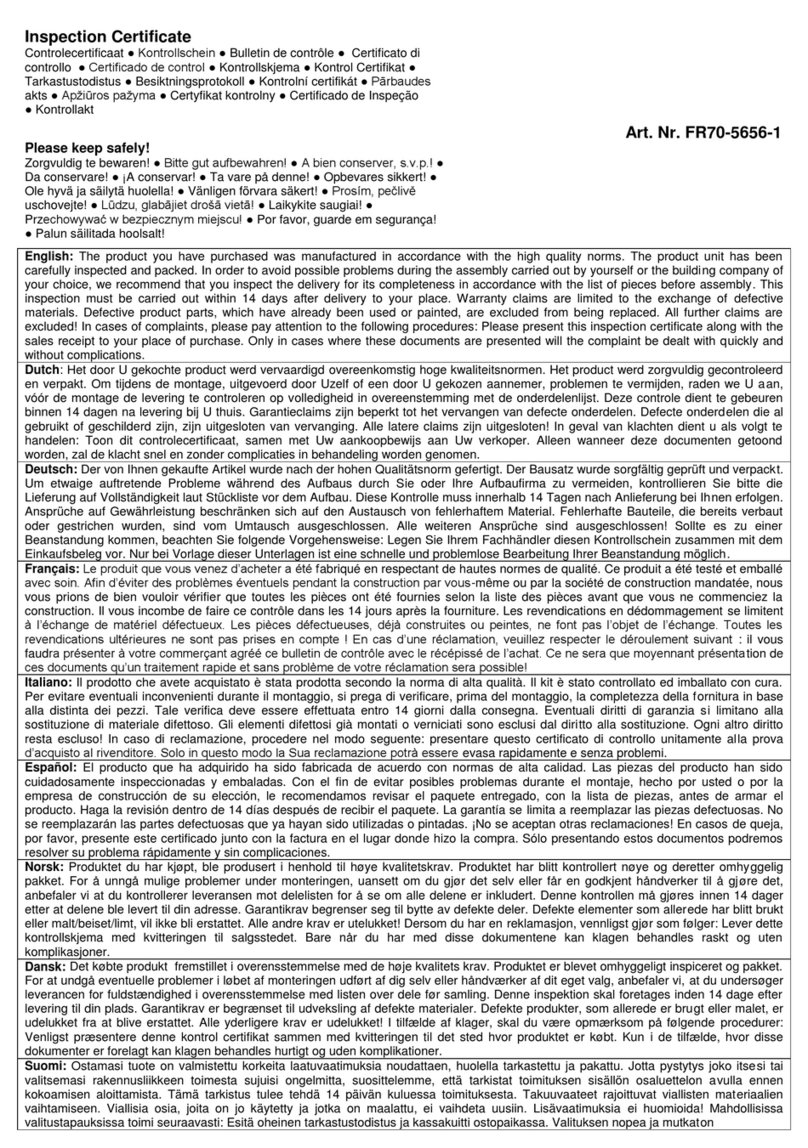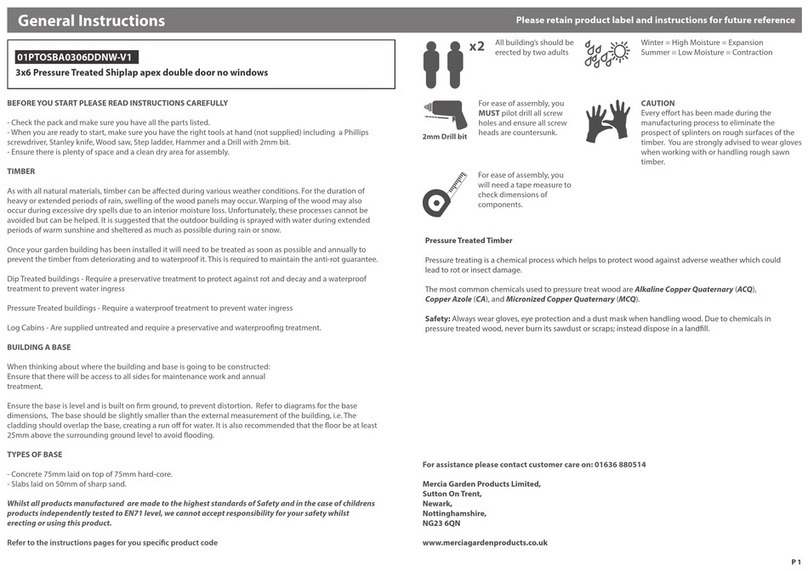
Leofric Building Systems - Fairford Shed Instruction Manual Page 5
You should thicken the edges of the base to a depth to suit the ground conditions. e thickness of the
concrete in the base will also depend on the soil conditions. e concrete mix design should be suitable for
a shed base – speak to your supplier and tell them what the concrete is intended for so they can provide the
correct mix. A minimum concrete thickness of 100mm (4”) is normally recommended, laid over at least the
same thickness of well compacted clean hardcore. e hardcore should be “blinded” with sand if you are
going to lay a damp proof membrane (dpm), normally 1200g polythene sheet. Steel reinforcement mesh will
further strengthen your base, your local agent or local builder will advise.
If you intend to store items in your shed once it has been built, we recommend the inclusion of a dpm.
Without the dpm there is no guarantee that damp will not spread into the building. Don’t forget that the base
will need time to “go o” or cure, before building on it. Allow at least a week, and more in winter.
e concrete base should be square. e shed needs to sit on a base about 75mm (3”) larger all round. When
setting out your base, make sure that the shuttering is square. To make sure your base is square, measure the
diagonals AD and BC – they should be the same. If not, adjust your shuttering until they are – your base will
then be square.
e external dimensions should be 150mm (6”) larger (75mm each side and front and rear) than the size of
the building you have bought. If in any doubt, seek advice and conrmation of the size of your building from
the company.
e concrete base should be level. ere must be no slope from side to side, back to front or front to back.
If you build your concrete shed on an unlevel base, the panels may not t together properly it may be dicult
for you to lay the necessary concrete llet, and the roof may not t properly. If the fall is to the rear, you may
well get puddles forming at the back of the shed.
e base must be higher than the surrounding area. It should stand out of the ground by at least 25mm (1”).
If not, water will stand on the base and may leak under the panels.
If the ground slopes down to the base, you should ideally dig out a trench 150mm (6”) deep around the base,
backlling with gravel or pea shingle, aer retaining the existing ground. Don’t forget to take into account
surrounding ground levels when you position your personnel door – if the ground is higher than the base, it
will catch as you open it. Obvious when you think about it, bit late when you have built the shed!
So, your base should be designed to suit your local conditions. It should be strong enough, at, square and
level, higher than surrounding ground and 150mm (6”) larger than the building size (external dimensions).
Finally, your concrete base should be positioned properly. Don’t forget that the personal door will project
from the side of the building when it is being opened, so position the base so that the door doesn’t foul a wall
or other building when you open it.
